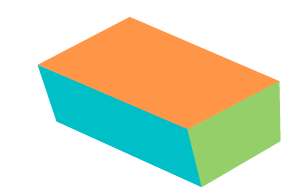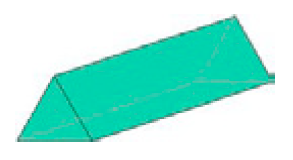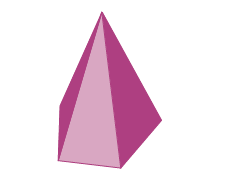No Excuse Words:
quadrilateral
square
rectangle
rhombus
parallelogram
attribute
length
side
face
vertex
Housekeeping:
Grade 3 Celebration of Learning
Thursday, March 5th, 6-7pm
Needed:
Please send recyclable but clean plastic bags! We are looking for a wide variety of colours for an upcoming art project. For example, a Sobey's grocery bag!
Math:
This week we began to examine quadrilaterals by looking at specific attributes and criteria that these shapes have in common.
We have been practicing to meaningfully use a ruler to measure in cm. We have also used snap cubes! This helps us to be:
-accurate
-draw straight lines
-examine angles
-think about perimeter
video: https://www.youtube.com/watch?time_continue=30&v=WMkY_uIku9Q&feature=emb_logo
What is a quadrilateral?
A quadrilateral is a four-sided two-dimensional shape. The following 2D shapes are all quadrilaterals: square, rectangle, rhombus, trapezium, parallelogram and kite.
We will also continue to examine 3D shapes and attributes.
3D shapes
watch video:
Writing:
Students are now using a bullseye rubric to edit their twisted fairytales and work towards writing their good copy!

Reading:
In our individual flex reading groups during literacy block, all students have begun a focus on fluency. Research shows that reading with fluency directly impacts our understanding and comprehension of what we read. Reading fluently also asks of us readers to take the time to research new word meanings and to think about the author's purpose in writing the text.
Fluency is defined as the ability to read with speed, accuracy, and proper expression. In order to understand what they read, children must be able to read fluently whether they are reading aloud or silently ... Their reading is smooth and has expression.
When fluent readers read silently, they recognize words automatically. They group words quickly to help them gain meaning from what they read. Fluent readers read aloud effortlessly and with expression. Their reading sounds natural as if they are speaking.
Readers who have not yet developed fluency read slowly, word by word. Their oral reading is choppy.
Because fluent readers do not have to concentrate on decoding the words, they can focus their attention on what the text means. They can make connections among the ideas in the text and their background knowledge. In other words, fluent readers recognize words and comprehend at the same time.
Less fluent readers, however, must focus their attention on figuring out the words, leaving them little attention for understanding the meaning of the text.
Science:
Here are some slides and video links from my presentation for you to review with your child :)
https://www.pbslearningmedia.org/resource/phy03.sci.phys.mfw.bbarch/arch-bridge/
https://study.com/academy/lesson/the-roman-arch-definition-construction-history.html
https://medium.com/@chrisjones_32882/architectural-basics-the-roman-arch-cd6242dd6e39
https://www.pbslearningmedia.org/resource/phy03.sci.phys.mfe.bbforces/forces-lab/























Comments
Post a Comment